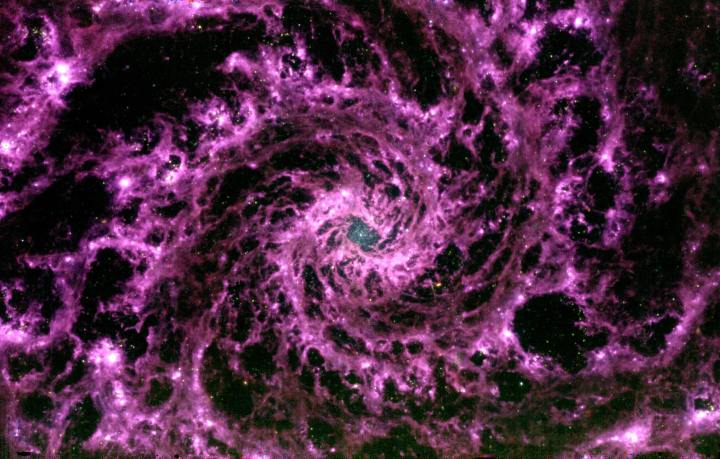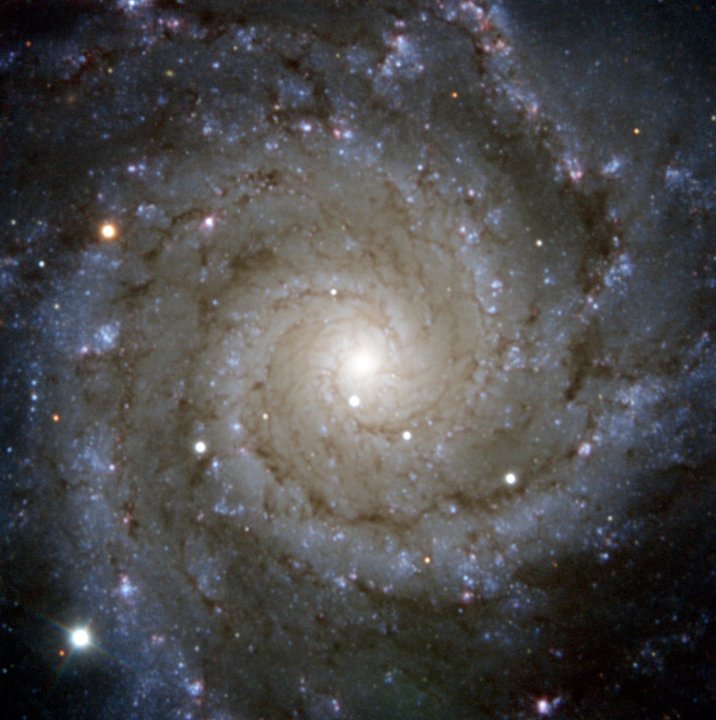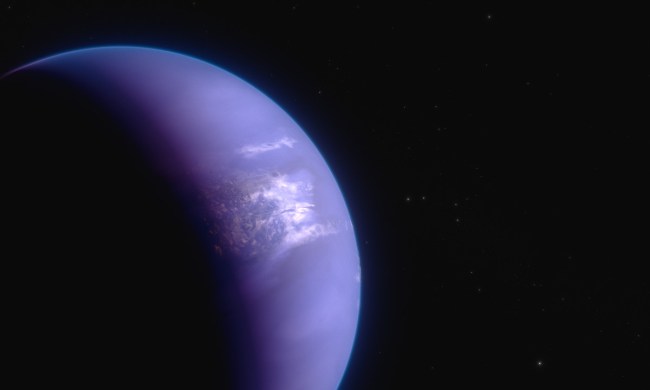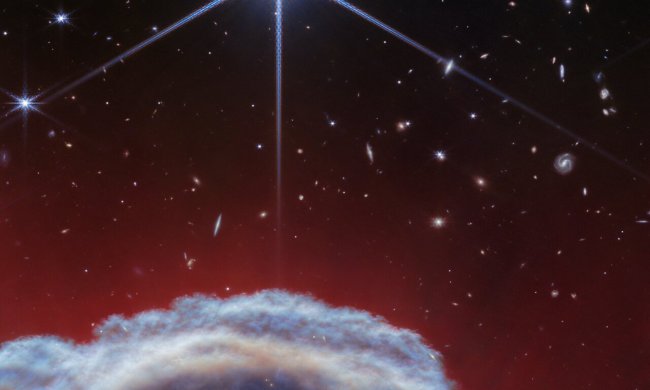Early data from the James Webb Space Telescope is already starting to come in, with exciting finds like views of Jupiter and a potential sighting of the most distant galaxy ever observed. But there’s a lot more Webb data being shared, and much of it is publicly available through the Space Telescope Science Institute’s MAST archive. That means enterprising astronomers are already digging through James Webb data to perform their own analyses, and have created some amazing visuals.
Gabriel Brammer, an associate professor at the University of Copenhagen, composed and shared this incredible and faintly terrifying image on Twitter. It shows the galaxy Messier 74, captured in the mid-infrared range by Webb’s MIRI instrument as part of the PHANGS-JWST project.

“Let’s just see what JWST observed yesterday …” Brammer wrote on Twitter. Then, echoing all of our sentiments, “Oh, good god.”
The image is this striking purple color because of the way the data is processed, in order to show off the structures of dust and hydrocarbons which swirl around the galaxy. The data used was taken on July 17 2022 at three different wavelengths in the mid-infrared: 7.7 µm, 10 µm, and 11 µm.
The galaxy looks very different in visible light wavelengths, as shown in this image of Messier 74 captured by the European Southern Observatory’s New Technology Telescope:

The James Webb data was collected as part of the PHANGS project, or Physics at High Angular resolution in Nearby GalaxieS, which is a survey that uses multiple different instruments including Hubble and ground-based telescopes to study how stars form from clouds of dust. The project will also work with Webb in order to peer through the clouds of dust which can otherwise obscure galaxies and get a clearer look at the star formation going on within.
The leader of the Webb part of the PHANGS research, Janice Lee of the National Science Foundation’s NOIRLab, said before the observations began that Webb could provide vital insights into understanding the life of stars: “JWST touches on so many different phases of the stellar life cycle – all in tremendous resolution,” Lee said in a statement. “Webb will reveal star formation at its very earliest stages, right when gas collapses to form stars and heats up the surrounding dust.”



